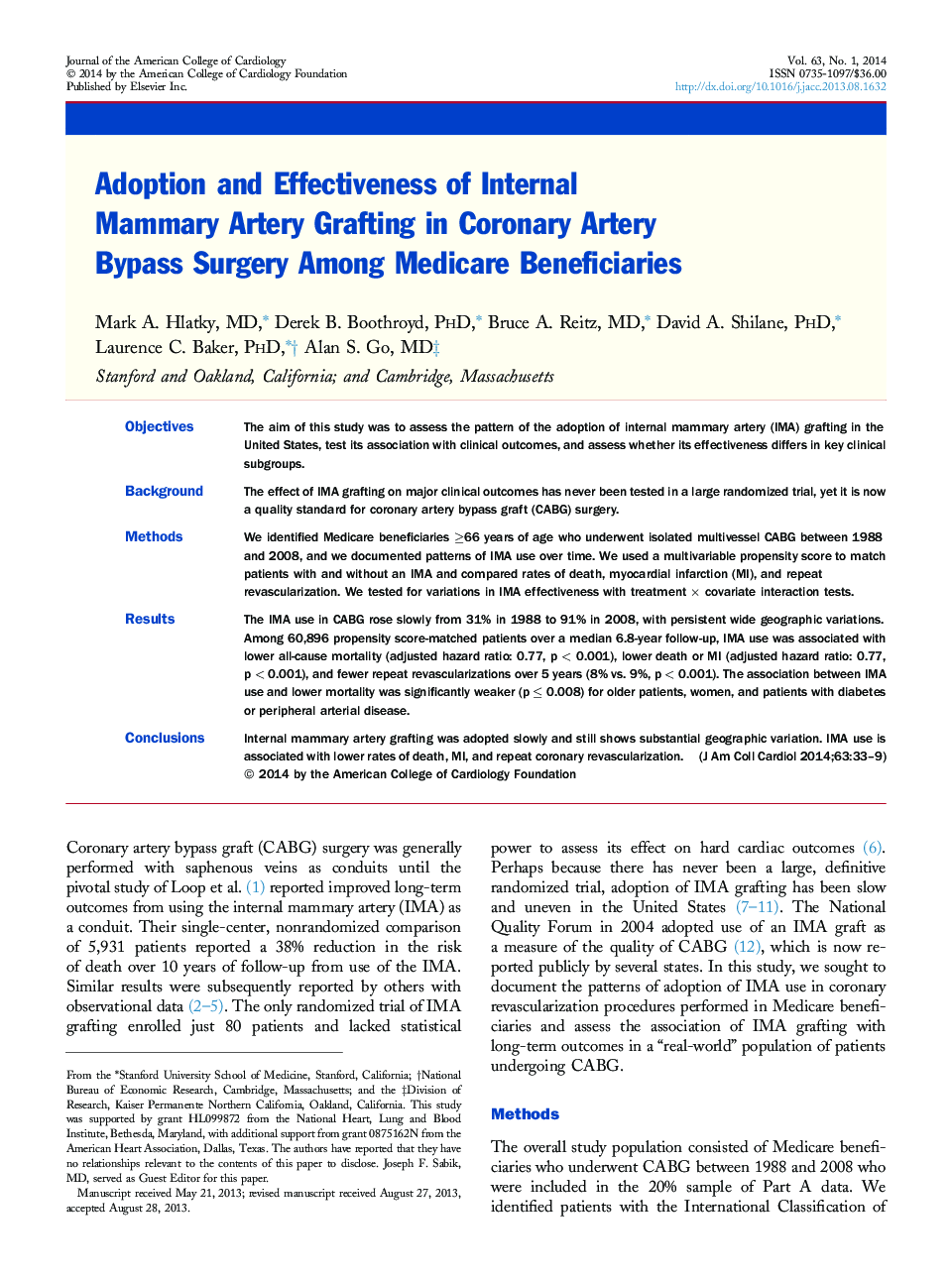| Article ID | Journal | Published Year | Pages | File Type |
|---|---|---|---|---|
| 5983337 | Journal of the American College of Cardiology | 2014 | 7 Pages |
ObjectivesThe aim of this study was to assess the pattern of the adoption of internal mammary artery (IMA) grafting in the United States, test its association with clinical outcomes, and assess whether its effectiveness differs in key clinical subgroups.BackgroundThe effect of IMA grafting on major clinical outcomes has never been tested in a large randomized trial, yet it is now a quality standard for coronary artery bypass graft (CABG) surgery.MethodsWe identified Medicare beneficiaries â¥66 years of age who underwent isolated multivessel CABG between 1988 and 2008, and we documented patterns of IMA use over time. We used a multivariable propensity score to match patients with and without an IMA and compared rates of death, myocardial infarction (MI), and repeat revascularization. We tested for variations in IMA effectiveness with treatment à covariate interaction tests.ResultsThe IMA use in CABG rose slowly from 31% in 1988 to 91% in 2008, with persistent wide geographic variations. Among 60,896 propensity score-matched patients over a median 6.8-year follow-up, IMA use was associated with lower all-cause mortality (adjusted hazard ratio: 0.77, p < 0.001), lower death or MI (adjusted hazard ratio: 0.77, p < 0.001), and fewer repeat revascularizations over 5 years (8% vs. 9%, p < 0.001). The association between IMA use and lower mortality was significantly weaker (p ⤠0.008) for older patients, women, and patients with diabetes or peripheral arterial disease.ConclusionsInternal mammary artery grafting was adopted slowly and still shows substantial geographic variation. IMA use is associated with lower rates of death, MI, and repeat coronary revascularization.
